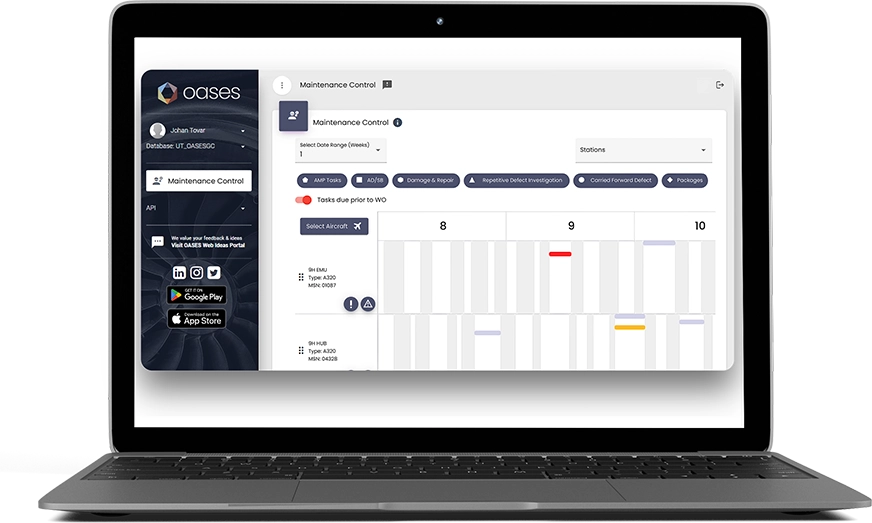At the tail end of summer 2023, airports across the UK were thrown into chaos as air traffic control outages caused mass delays and holiday woes for thousands of passengers.
NATS revealed that a technical malfunction caused the disruption to its operations, resulting in extensive flight cancellations and delays throughout the UK aviation network. The glitch was traced back to a problem within the Flight Plan Reception Suite Automated-Replacement (FPRSA-R), a component of the flight plan processing subsystem. This issue caused the system to enter a fail-safe mode.
The result? Thousands of passengers faced holiday turmoil as a result of the system failure, with over 1500 flights cancelled and hundreds more delayed.
Network outages weren’t the only cause of UK airport downtime. At the end of September 2023, Gatwick Airport, the 2nd biggest airport in the UK, was forced to temporarily limit flight numbers to 800 per day as a result of sickness amongst air traffic control staff. This meant up to 65 flights got cancelled on the busiest days of the week.
In this article, we explore how modern MRO software can optimise your maintenance management processes to reduce costs and maximise aircraft uptime.
The Impact of Downtime Caused by Network System Outages
The upswing in travel during the summer months is a welcome source of revenue for airlines, but it also brings the risk of severe network disruptions for those that haven’t adequately prepared.
Airlines heavily depend on their network systems to manage every aspect of the travel experience and outages can have a substantial impact on the travel plans of their passengers. In some instances, downtime caused by network problems has cost organisations more than £120 million.
There have been cases where airlines had to deal with flight cancellations and delays caused by outages months before the peak summer travel season. This underscores the importance of ensuring that both airports and airlines are well-equipped with robust digital strategies year-round.
What Does This Have to Do with Maintenance Management?
With all the flight disruptions, maintenance schedules are also thrown off. That’s why airlines require agility, and agility comes when you have the right tools and the right processes. In this case, we’re referring to MRO software, and using it to keep your maintenance processes in line regardless of unexpected circumstances.
Considering the scenarios mentioned above with aircraft grounded due to air traffic control issues, this agility would allow maintenance tasks to take place during that window, while craft were already grounded. That way, no extra delays would occur on top of the existing disruption and profitability would not be so hard hit.
How MRO Software Ensures Maximum Uptime
To reduce downtime and minimise the impact of unexpected schedule changes, it’s essential to optimise the day-to-day processes related to the management of your fleet and its aircraft, engines, components and maintenance equipment. These processes need to be optimised for greater flexibility so that maintenance teams can respond to challenges with ease.
This is easier said than done; but with modern, cloud-based airline MRO software, many operators are maximising aircraft uptime, reducing costs and improving passenger satisfaction. Below are just a few ways OASES can help your organisation do the same.
Maintenance Control
When flight schedules face disruptions, it’s imperative for maintenance teams to have real-time insights and tools that allow them to adapt quickly, as unexpected changes can impact safety, operational efficiency, and overall service quality.
The OASES Maintenance Control module ensures flexible line maintenance so that taskscontinue as usual, despite disruptions. Thanks to this module, teams are aware of service demand at all times – they can monitor status, identify maintenance slots and allocate resources and materials all in one place.
This information is displayed on a colour-coded interface; with the capability to visualise the cascading effects of changes, teams can more effectively prepare for shifts in the schedule, preventing prolonged delays and potential safety risks.
Maintenance Planning
As well as the above, our solution comes with a range of other tools for automating time consuming planning tasks. For example, the Planning module handles work orders, and automatically generates work package documentation and material pre-loads. In addition, work orders automatically include actions required due to airworthiness directives andservice bulletins.
There is also a Line Maintenance module, which handles all short-term planning and provides staff with dashboards indicating the status of any aircraft and the aircraft’s location, hours, cycles, and so on.
Inventory and Materials Management
Poor inventory management is another major cause of aircraft downtime as well as excessive MRO costs. Aircraft parts and other materials may be distributed across multiple sites, meaning that staff waste a significant amount of time locating what’s needed. As a result,aircraft are grounded for longer as repairs are delayed.
The ideal scenario would be to always have the right amount of inventory in the right place at the right time. Considering the challenges faced this summer, this would help operators to be ready to take on maintenance tasks while aircraft were grounded, preventing further delays.
Our Materials Management module provides a comprehensive inventory management system to account for the vast array of parts and equipment required by airlines and MROs.
The module helps to automate much of the admin involved, and minimises user errors (and the delays they may cause), and ensures cost-effective availability of materials, the tracking of stock levels and movements, and the recording of all component locations.
The system can also trigger re-ordering and stock transfer alert reports, as well as pre-allocate items for planned maintenance. If a higher priority event occurs, the items can be released and new stock will be ordered automatically.
Maintaining Continuing Airworthiness
Staying on top of compliance is essential in reducing aircraft downtime – yet it can be a tedious process at the best of times, let alone amidst the chaos experienced this summer.
MRO software ensures you always meet regulatory obligations by giving you the tools needed to manage continuing airworthiness processes.
For example, OASES’ Continuing Airworthiness module maintains reliability statistics at a fleet level and automatically generates graphical reports. This provides valuable insights into utilisation, open defects, component removals and many more key data points. It also keeps a model of every aircraft and detailed information on the elapsed life data for its components.
In short, the module provides an authoritative source across airworthiness directives, service bulletins, engineering orders, safety integrity levels, and aircraft operations tests.
Conclusion
Reducing downtime is a primary goal for any successful airline, and adaptability is crucial for doing so in the face of unexpected disruptions.
MRO software makes it possible to adapt to and reduce the impacts of schedule interruptions and other unforeseen circumstances. However, we’ve just scratched the surface of how airlines, MROs and CAMOs across the world benefit from OASES.
To learn how our software can benefit your organisation specifically – and book a demo – contact us today.



